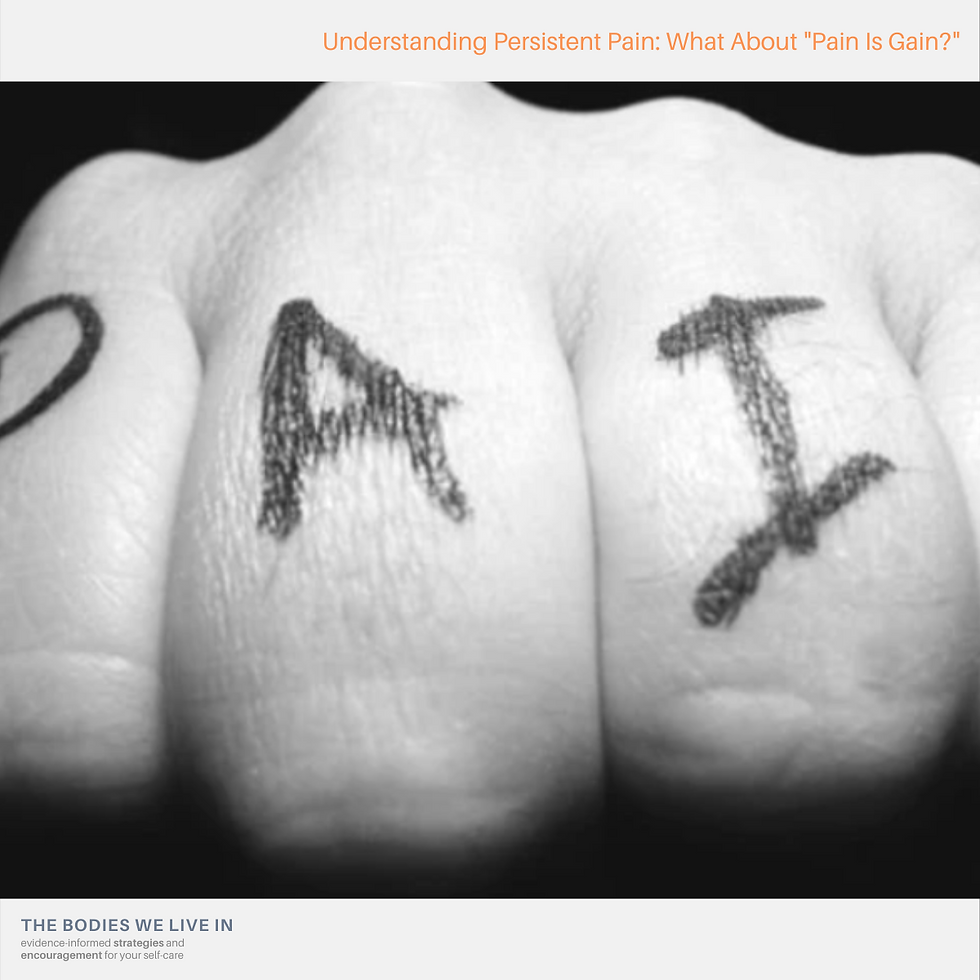Understanding Persistent Pain: What About "Pain Is Gain?"
- Raechel
- Dec 7, 2017
- 2 min read
Updated: Jul 3, 2024

Your body is strong. Your body is adaptable. Structural issues, posture habits, and even persistent pain aren’t an end all to movement.
But is pain ever... gain?
The phrase "pain is gain" is typically used the most in settings where athletes are training for some type of extreme body conditioning or endurance exercise.
Although I can't speak to the merits of "painful gains" in that context, I can speak to my experience providing massage therapy to those with persistent pain. Those who aren't pushing their body to an extreme but are simply trying to get through their days and nights with less pain.
Persistent pain can lead to fear or hesitation of movement. There’s a history of pain that becomes associated with many things, notably specific movements or activities.
So, our body will naturally “guard” from those movements or activities, which are perceived as a threat to more injury. Our fears and anxieties often create secondary issues, muscle tension, and emotional stress that prevents or slows our recovery. In these cases an approach that is slow, kind, informed, and gradual is key. More pain is likely not going to lead to gain.
If a movement almost always induces more pain, that is a clear signal to back off, adjust, modify, or seek professional assistance. Physical therapy, occupational therapy, massage therapy, or other body or movement professions, may be of assistance to help change physical or mental habits associated with painful movements. Each time you have a safe, pain-free victory, you can change the story your brain has been reciting over and over.
Eventually, that story gets better and better, as we decrease fears and hesitation and improve range of motion.
Understanding Pain Article Series
Understanding Persistent Pain: What About "Pain Is Gain?"
Understanding Persistent Pain: Mindfulness Understanding Persistent Pain: It's An Experience, Not a Signal
- - -
Understanding Persistent Pain eBook
The nervous system is constantly evaluating a variety of cues and information that when combined create a pain experience. It's a complex process involving many parts of the mind and body. This guide will provide readers with a better understanding of persistent pain along with tools to reduce or manage it. learn more...




Comments